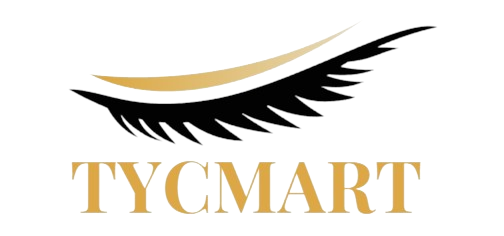Working out is essential for men who want to stay in shape and improve their overall physical performance. But what about recovering after each training session? It’s important to remember that your workout regimen needs to include a recovery plan that promotes healing and muscle growth. In this article, we’ll discuss the best workout recovery strategies that men need to adopt in order to maximize their results. Read on to find out more!
1. The Benefits of Workout Recovery for Men
Working out can be fun, but the real benefit of any exercise regimen comes in post-workout recovery. A good recovery regime helps men to stay healthy, recover from any stress or injury from pushing their limits, and build muscle faster than if they weren’t recovering. Here are just a few of the benefits of recovery:
- Stress Management. Working out releases endorphins, which can make people feel boost in mood. But overtraining, when an athlete pushes too hard and doesn’t allow for adequate recovery, can lead to overtraining syndrome or burnout. Recovery enables an athlete to better manage stress.
- Injury Prevention. Working out puts a strain on muscles, and recovery enables those muscles to recover, grow, and become stronger. Without proper recovery, muscles could break down or be injured, and tissues may become inflamed.
- Muscle Growth. Hormones in the body are essential for muscle growth; during recovery, hormones are naturally released to help with muscle building. When sleeping with proper rest and eating well, men give their bodies the time to repair and make muscles stronger.
Whether doing strength training or more aerobic activities, recovery helps men to more efficiently achieve their goals, stay in shape, and have more energy to reach the next level. Focusing on proper warm-up, stretching, and proper rest will let men keep their performance high.
2. Strategies for Healthy Healing and Muscle Growth
One of the best is to make sure to eat properly. Eating a balanced diet and getting the right nutrients is key for repairing muscle tissue and ensuring lasting gains. Eating plenty of lean proteins such as fish, poultry, eggs and dairy will provide the body with the nutrients it needs to grow. In addition, eating plenty of fresh fruits and vegetables and complex carbs such as whole grains will also help promote healthy muscle growth.
Getting enough rest and recovery is also an important part of the strategy for healthy healing and muscle growth. If you are lifting weights, make sure to give your muscles 24-48 hours of rest between workouts. This will help ensure that your body has enough time to repair the muscles that have been worked and rebuild them stronger than before.
Strength and conditioning exercises can also be beneficial for healthy healing and muscle growth. Incorporating exercises such as squats, deadlifts, and push-ups on a regular basis can help strengthen the muscles and promote healthy growth. Another beneficial exercise is foam rolling on the major muscle groups which helps improve circulation and reduce inflammation as well.
The following steps can also help to promote healthy healing and muscle growth:
- Get enough sleep.
- Reduce stress.
- Be patient and consistent.
- Drink plenty of water.
- Supplement wisely.
3. Packing Essential Nutrients into Your Diet
Eating healthy doesn’t end with getting the right amount of nutrients – it should also include . There are some key nutrients that are especially important for maintaining health and overall wellness. Here are some of the most important:
- Fiber: fiber helps keep our digestive systems healthy and can reduce the risk of certain diseases. Foods like beans, oatmeal, whole grains, nuts, and fruits are all good sources of fiber.
- Carbohydrates: carbohydrates provide our bodies with energy, and can be found in whole grain bread, cereals, fruits, and vegetables. It is important to focus on complex carbohydrates as these are more healthful and provide long lasting energy.
- Proteins: proteins are necessary for our bodies to function properly. They help build and repair tissue, and are found in lean meats, eggs, beans, nuts, and dairy foods.
- Vitamins and Minerals: vitamins and minerals help our bodies to fight off diseases and to function properly. Fruits, vegetables, dairy products, and whole grains are all good sources of these essential nutrients.
It’s also important to remember that no single food can provide all of the nutrients our bodies need. The key is to eat a variety of foods from each of the food groups in order to get all of the essential nutrients. Eating a well-balanced diet is the best way to ensure that your body is getting the essential nutrients it needs.
Everyone has unique dietary needs and preferences, so it can be helpful to speak with a registered dietitian who can help you create a meal plan tailored to your individual needs. With a balanced diet plan and the right nutrition, you can stay healthy and feel great.
4. Maximizing Rest and Recovery Time
can make or break an athlete’s training regimen. As any exercise enthusiast knows, the body needs time to recuperate after strenuous physical activity to achieve peak performance. Here are some tips to get the most out of rest and recovery time.
Know Your Fitness Level – Before dictating how much rest and recovery time is needed, assess your current fitness level. If you’re just starting out on your fitness journey, your body needs more rest than a seasoned athlete. Make sure you adjust your plan to incorporate rest and recovery needed for your current fitness level.
Prioritize – Devote ample time to physical activity and recovery days. Skimping on either of these can be detrimental to reaching fitness goals, so prioritize these days to ensure optimal results. High-intensity exercises should have more recovery days so focus on this regimen as much as possible.
- Utilize other forms of exercise such as yoga and stretches on rest days.
- Make sure that rest and recovery days are just as important as working out days.
- Hydrate, eat protein-rich snacks, and get plenty of sleep to aid your body during the rest and recovery process.
Listen to Your Body – Adequate rest and recovery time helps prevent serious injuries as well, so listening to your body and its needs while exercising and on rest days is important. Monitor how you feel throughout the whole process and if you encounter any difficulty, adjust your plan accordingly.
5. Putting It All Together: The Path to Optimal Muscle Growth
The path to optimal muscle growth can be complex, but simple if approached in an organized manner. Here are the five steps to building strength and lasting muscle:
- Focusing on Nutrition: Eating enough protein and healthy carbohydrates is the food foundation of optimal muscle growth. Make sure to get enough nutritious food daily to support your body’s needs while you train.
- Developing a Training Plan: Find the best exercises and create a training plan for them, which builds a foundation of strength. Follow a credible program to ensure effective and safe workouts.
- Resting: Make sure to build in enough rest into your training plan. This gives your body time to recover so you can return to the gym with determination and intensity.
- Adding Intensity: It’s not enough to just go through the motions. Challenge yourself to take your reps and sets up a notch to achieve maximum gains.
- Tracking Progress: Track your progress in a journal and ask for help when you need it. Victory doesn’t come overnight; it takes hard work, dedication, and a well-planned strategy.
Ultimately, the best way to optimize your muscle growth is to pay attention to your body throughout the process. With the right combination of nourishment, exercise, and dedication, you can increase your muscle mass and strength. Don’t give up and keep pushing yourself.
Maintaining a healthy and responsible workout regimen can have wonders on not only your physical health but your mental health as well. By understanding and following the recovery methods discussed in this article, you can ensure that your workout routine is optimized for growth. Your body will thank you for it today, tomorrow, and in the future.

